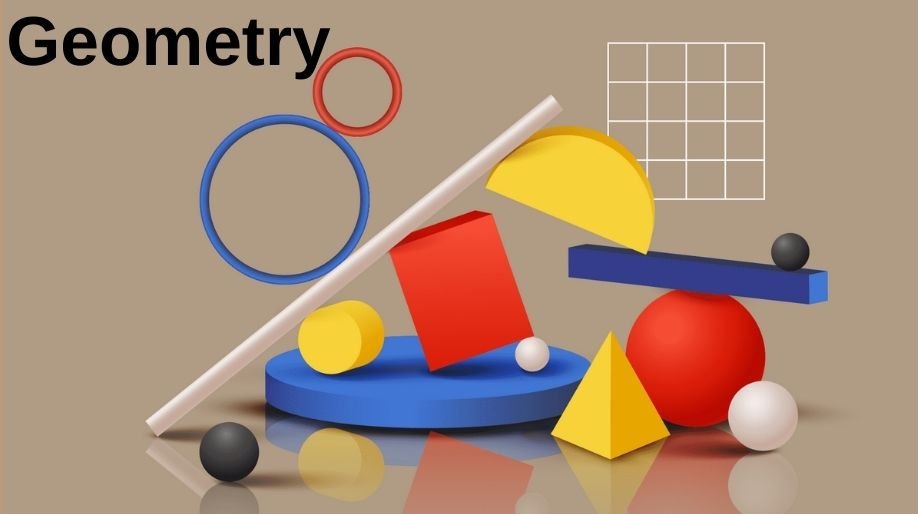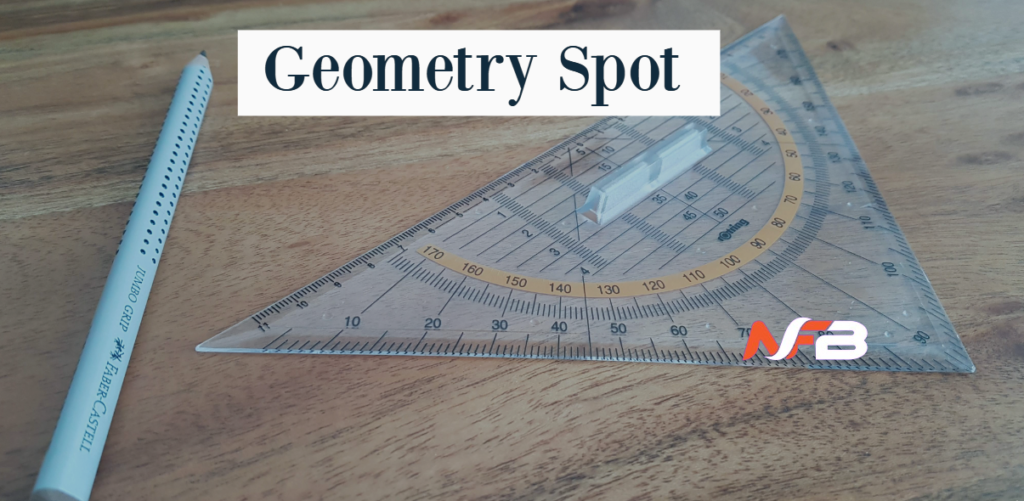Geometry spoy, A little child named Lila lived in a tiny community tucked away in the mountains. She was enthralled with the world around her. She would wander through the fields and woodlands every day, gathering flowers, stones, and leaves. Saw the complex geometric patterns built into a spider’s web one morning as she examined one that was sparkling with morning dew. Her attention was piqued by this finding, and she started to notice geometric shapes in everything, including the structure of her hamlet and the petals on flowers.
As Lila learned more about geometry, her interest in the topic intensified. She became knowledgeable about the early mathematicians who examined these patterns and how their findings paved the way for later developments in science and engineering. Lila decided to start a website named “Geometry Spoy” to share her love of geometric shapes and patterns with the world after being inspired by their work.
Geometry Spoy developed into a veritable gold mine of information, including everything from intricate fractals to fundamental forms. It provided information on how geometry is used in real-world contexts in industries like architecture, art, and nature. This blog post seeks to elucidate the secrets and demonstrate the beauty and practical applications of geometry, taking you on a journey through this fascinating field.
The Fundamentals of Geometry
Recognizing Geometric Shapes
One area of mathematics called geometry examines the characteristics and relationships of surfaces, solids, lines, and points. Fundamentally, it investigates the sizes, forms, and spatial connections of items. Among the fundamental geometric shapes are:
- Points: A point is an exact location in space that lacks dimensions and has no size.
- Lines: A line is a one-dimensional, straight segment that can stretch indefinitely in both directions.
- Planes: A two-dimensional, flat surface that is endlessly long in all directions is called a plane.
- Angles: Two lines or line segments intersect to make an angle.
Geometric Shape Types
There are several categories into which geometric shapes can be divided, such as:
- Polygons are closed, flat shapes like pentagons, quadrilaterals, and triangles that have straight sides.
- Ellipses and circles are two examples of round shapes with radii and focal points.
- Three-dimensional shapes are volumetric solids such as pyramids, spheres, and cubes.
Uses of Geometry in Real-World Applications
Architectural Geometry
In architecture, geometry has a significant impact on the planning, designing, and constructing of buildings and other structures. Geometric concepts used by architects to produce designs that both aesthetically beautiful and sound structurally. The Parthenon in Greece, for instance, exhibits the ancient Greeks’ knowledge of geometry with its exact geometric proportions.
Geometric concepts also fundamental to modern building. sophisticated geometric modeling techniques used in the design of skyscrapers, bridges, and stadiums. Architects may precisely perceive and manipulate geometric shapes by using computer-aided design (CAD) software.
Famous Architectural Structures with Geometric Shapes
| Structure | Geometric Shape | Location |
|---|---|---|
| The Great Pyramid of Giza | Pyramid | Egypt |
| The Colosseum | Ellipse | Italy |
| Eiffel Tower | Truss (triangular shapes) | France |
| Sydney Opera House | Spherical sections | Australia |
| Burj Khalifa | Y-shaped base | United Arab Emirates |
- Geometry in Art: For a very long time, artists have employed geometric shapes to produce visually striking pieces. Geometry offers a foundation for creativity found in everything from the complex patterns of Islamic art to the abstract shapes of modern art. For example, the Renaissance painter Leonardo da Vinci employed geometric concepts to produce harmony and balance in his works.
In modern art and design, geometric patterns are very common. Piet Mondrian and M.C. Escher were two artists who experimented with geometric forms to subvert perceptions and produce optical illusions. Digital art also influenced by geometry, as algorithms produce intricate patterns and fractals.
Nature’s Geometry
There are many geometrical ideas to found in nature. Geometry can seen in many different natural forms, such as the spiral formations of shells and the hexagonal patterns of honeycombs. Mathematical concepts like the golden ratio and the Fibonacci sequence frequently observed in these patterns.
These geometric patterns are studied by biologists in order to comprehend the fundamental mechanisms that form living things. For example, blood arteries and trees branch according to geometric principles that maximize resource allocation. Gaining an understanding of these patterns can help researchers in environmental science and biomimicry.
Advanced Ideas in Geometry
Fractals
Complex geometric forms that show self-similarity at various scales called fractals. This indicates that the shape seems the same at all magnification levels. Natural phenomena like clouds, mountains, and coastlines contain fractals.
The Mandelbrot set, which discovered by mathematician Benoit Mandelbrot, among the most well-known fractals. This collection illustrates how fractals detailed and infinitely complex. Applications for fractal geometry can found in signal processing, computer graphics, and even stock market analysis.
Non-Euclidean Coordinates
Non-Euclidean geometry investigates curved spaces and surfaces, whereas Euclidean geometry works with flat surfaces and straight lines. grasp the structure of the cosmos and how objects behave in space requires a grasp of this area of geometry.
The theory of general relativity, which explains the gravitational pull of heavy objects, makes use of non-Euclidean geometry. Additionally, topology—the study of space’s qualities that hold true under constant deformations—has applications for it.
Euclidean and Non-Euclidean Geometry Comparison
| Aspect | Euclidean Geometry | Non-Euclidean Geometry |
|---|---|---|
| Surface Type | Flat (plane) | Curved (spherical or hyperbolic) |
| Parallel Lines | Never intersect | Can intersect or diverge |
| Angle Sum of Triangle | 180 degrees | Can be more or less than 180 degrees |
| Applications | Classical geometry, architecture | Relativity, cosmology, topology |

Answers to Common Questions (FAQs)
Does Geometry Spoy exist?
Geometry Spoy an online community devoted to the study and exchange of geometric forms and patterns. It covers a broad range of subjects, including sophisticated geometric principles and their applications in diverse fields, as well as simple shapes.
In what ways geometry applied in daily life?
Many daily tasks, such as calculating distances, planning buildings, making art, and seeing patterns in nature, require the use of geometry. It facilitates our ability to move across space, make useful things, and recognize the beauty of the environment we live in.
Where can one find fractals and what does it mean?
Complex geometric forms that show self-similarity at various scales called fractals. They can found in biological structures like blood arteries and trees as well as in environmental phenomena like mountains, coastlines, clouds, and trees.
What distinguishes Euclidean geometry from non-Euclidean geometry?
While Euclidean geometry is concerned with flat surfaces and straight lines, non-Euclidean geometry works with curved spaces and surfaces. grasp the structure of the cosmos and how objects behave in space requires a grasp of non-Euclidean geometry.
Which well-known architectural works make use of geometric shapes?
The Great Pyramid of Giza (pyramid), the Colosseum (ellipse), the Sydney Opera House (spherical portions), the Eiffel Tower (truss with triangular shapes), and the Burj Khalifa (Y-shaped base) are notable examples of architectural constructions that incorporate geometric shapes.
Why is the use of geometric patterns in art important?
In art, geometric patterns offer a framework for artistic expression and aesthetic appeal. They support artists in achieving harmony, proportion, and balance in their creations. Abstract compositions, elaborate designs, and optical illusions are all made possible by the employment of geometric forms.
Conclusion
From the elaborate patterns seen in nature to the magnificent shapes of man-made structures, geometry is a subject that never fails to enthrall and inspire. Geometry fosters creativity in a variety of fields and improves our comprehension of the universe. By providing a plethora of information and insights about the elegance and practicality of geometric shapes and patterns, Geometry Spoy honors this age-old fascination.
Through delving into the foundational ideas and sophisticated notions of geometry, we acquire a more profound understanding of the surrounding environment. Geometric patterns show the underlying order and complexity of the universe, whether they found in nature, art, or architecture. Further discoveries and applications of geometric concepts provide up new avenues for learning, creativity, and innovation.

